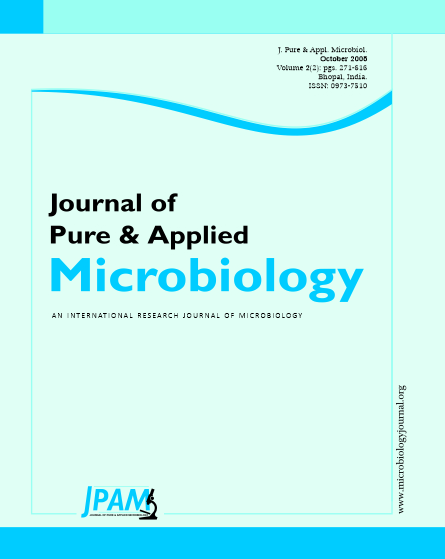A mixed bacterial culture (SKB-II) comprising of five bacterial isolates Bacillus vallismortis, Bacillus pumilus, Bacillus cereus, Bacillus subtilis and Bacillus megaterium, developed from an effluent treatment plant of a textile & dyeing industry, was evaluated for its ability to decolorize azo dye Direct Red 28 in an up flow immobilized cell bioreactor using plastic clips as a support for biofilm formation. The bioreactor was operated under various parameters: aeration rates of 10 ml min-1 & 15 ml min-1 with flow rates of 60, 90 & 120 ml h-1 respectively. At constant aeration rate of 10 ml min-1 and with flow rates 60, 90 & 120 ml h-1, optimum decolorization of 69, 71 and 70% decolorization was observed while at aeration rate of 15 ml min-1 and flow rates of 60, 90 & 120 ml h-1, optimum decolorization of 73, 66 and 63% decolorization was observed. The study concluded that across the two aeration rates and the respective flow rates, aeration rate of 15 ml min-1 along with flow rate of 60 ml h-1 was best suited to decolorize Direct Red 28 in the up flow immobilized cell bioreactor. Spectral changes of the input and output of the bioreactor by UV-visible, spectroscopy indicated decolorization of the dye solution by degradation in addition to the visual observation of the biosorption process. On the basis of the results of this study an ‘on-site’ treatment system can be developed to achieve decolorization for azo dye effluents.
Azo Dye, Direct Red 28, biofilm, bacterial consortium, up-flow immobilized bioreactor, Bacillus sp
© The Author(s) 2008. Open Access. This article is distributed under the terms of the Creative Commons Attribution 4.0 International License which permits unrestricted use, sharing, distribution, and reproduction in any medium, provided you give appropriate credit to the original author(s) and the source, provide a link to the Creative Commons license, and indicate if changes were made.


